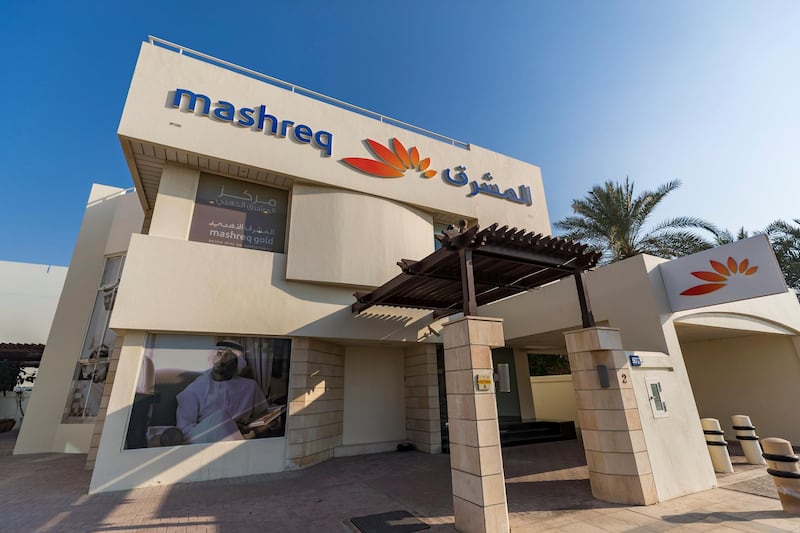UAE and Arabian Gulf banks banks find themselves on a different footing towards the second half of the year given the uptick in the dollar and price appreciation of oil.
Higher interest rates may also give banks a shot in the arm when it comes to profitability this year but banks in the UAE and the Gulf, like lenders all over the world, are facing increasing regulatory costs that may put a damper on profitability in years to come, bankers say.
"I think the outlook is somewhat brighter for banks but I think the reality is that banks all over the world are under pressure," Katherine Garrett-Cox, managing director and chief executive officer of Gulf International Bank UK told the National.
“The global trend around banking is going to be a much tougher environment going forward. The basic issue is that the cost of being in business is on the rise. If you talk to banks world over, they will say they are hiring the most in compliance areas.”
Nonetheless, Ms Garrett-Cox said that 2018 was already looking “like a happier and healthier year” for banks in the region. Despite the economic challenges, many businesses are coping with lower oil prices than the 2014 mid-year peak of $115 a barrel.
Already, the first quarter earnings of the biggest banks in the region are showing signs of improvement. First Abu Dhabi Bank, the UAE’s biggest bank by assets, reporteda 2 per cent year-on-year growth in first quarter net profit, boosted by higher revenue from fees and commissions and a 31 per cent decline in money set aside to cover bad debt. Emirates NBD, Dubai’s largest bank by assets, and Dubai Islamic Bank, the biggest Sharia-compliant lender in the emirate, both posted higher-than-expected first-quarter earnings as provisions also declined.
Overall, bankers are betting this year will be better than last year. Abdulaziz Al Ghurair, the head of the UAE Banks Federation, said in March that he expects higher loan growth and profitability for banks in 2018 as the economy turns the corner and lenders reduce the amount of non-performing loans that piled up during the SME debt crisis in the wake of the 2014 oil crash.
The banker, who is also the chief executive of Dubai-based Mashreq Bank, forecast loan growth of 5 per cent to 6 per cent on aggregate for banks in the UAE this year compared to 4 per cent last year. At the same time, the profitability of banks is likely to exceed the 8 per cent growth seen in 2017 compared with 2016.
“Despite everything that’s happening around us, we are seeing growth,” he said.
_______________
Read More:
[ Samba posts 6% gain in first quarter profit ]
[ First Abu Dhabi Bank posts first-quarter gain ]
[ Saudi Arabia's Al Rajhi Bank first quarter profit rises 7.3% ]
_______________
UAE banks are also continuing to expand abroad, especially into fast-growing emerging markets like India and China whose economies do not rely on the sale of commodities to fuel economic growth. Banks including Mashreq and First Abu Dhabi Bank are among lenders who have increased their presence in India and China in recent years.
They are also targeting growth opportunities in the region, especially in Saudi Arabia where authorities are making it easier for banks to get licenses and lenders are bouncing back after the economy of the world's biggest crude oil exporter contracted in 2017. First Abu Dhabi Bank got a license from the Saudi Arabian Capital Market Authority in February to set up an investment banking operation and other lenders, such as JP Morgan, are beefing up their presence.
Meanwhile, local Saudi banks are also reaping the benefits of reforms in the kingdom and higher oil prices which touched $80 a barrel last week.
Al Rajhi Bank, the kingdom’s biggest bank by market value, posted a 7.3 per cent increase in first quarter net profit. Samba Financial Group, another titan of the Saudi Arabian financial services industry, posted a 6 per cent increase in first quarter net profit, boosted by gains in special commissions and investments in addition to a decrease in credit costs and salary expenses.
The fortunes of Saudi Arabian banks, in general are improving on the back of a return to economic growth in the biggest Arab economy after it slowed down in the wake of the three-year oil slump.
Saudi Arabia’s listed banks on aggregate reported a 9 per cent year-on-year increase in net profit in 2017, an improvement on a 5 per cent decline the previous year, due to lower interest expenses, prompting expectations of a credit-positive recovery in 2018, according to a Moody’s report published in March.
Improvement in aggregate profit last year was mainly due to lower interest expenses, according to the rating agency’s report.
And while compliance costs may rise for Arabian Gulf banks and lower oil prices than 2014 will put pressure on the profitability of banks, the increasing use of financial technology, or fintech, will help banks stay financially nimble in the long run.
Banks in the UAE have been accelerating in recent years the shift from a traditional branch model to one based more on online banking. Lenders including Mashreq, HSBC and Abu Dhabi Islamic Bank have been investing in artificial intelligence and partnering with fintech companies to streamline operations. Emirates NBD said in July it plans to spend Dh1bn on technology over the next three years to help reduce costs.
“One of the things that we recognise is that the population in this part of the world is very young, with 70 per cent under the age of 30, especially in our core markets, like the kingdom of Saudi Arabia,” said Ms Cox-Garrett. “It’s for that reason we recognise that a lot of young people don’t want to walk into banks anymore.”





